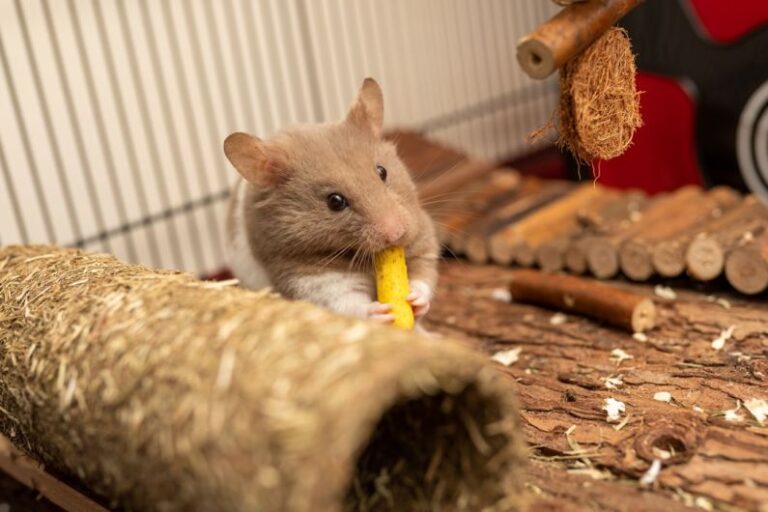
Hamsters are adorable and energetic pets that bring joy to many households. As responsible pet owners, it is our duty to ensure that our furry friends live in a safe and comfortable environment. One crucial aspect of hamster care is maintaining proper ventilation in their cage. Adequate ventilation is essential for your hamster’s health and well-being, as it helps regulate temperature, reduce odors, and prevent the buildup of harmful bacteria. In this article, we will explore some effective ways to ensure proper ventilation in your hamster’s cage.
**Choosing the Right Cage**
The first step in maintaining proper ventilation for your hamster is selecting the right cage. Opt for a cage that is well-ventilated, with ample air circulation. Avoid cages with solid walls or minimal ventilation openings, as they can lead to poor air quality inside the cage. Wire cages with small spaces between the bars are ideal, as they allow for proper airflow while keeping your hamster safe and secure.
**Placement of the Cage**
Where you place your hamster’s cage can also impact ventilation. Avoid placing the cage in direct sunlight or near heat sources, as this can cause the cage to become overheated and stuffy. Instead, place the cage in a well-ventilated area with good air circulation. Ensure that the cage is not placed in a drafty area, as sudden temperature changes can be harmful to your hamster.
**Regular Cleaning**
Regular cleaning is essential for maintaining proper ventilation in your hamster’s cage. A dirty cage can lead to the buildup of ammonia from urine and feces, which can be harmful to your hamster’s respiratory system. Clean the cage at least once a week, removing any bedding, food, and toys that may be soiled. Thoroughly clean and disinfect the cage using a pet-safe cleaner to eliminate bacteria and odors.
**Bedding Choices**
The type of bedding you use in your hamster’s cage can also affect ventilation. Opt for bedding materials that are absorbent and help control odors, such as paper-based bedding or aspen shavings. Avoid using cedar or pine shavings, as they can release harmful fumes that can irritate your hamster’s respiratory system. Replace the bedding regularly to maintain a clean and fresh environment for your hamster.
**Proper Airflow**
Ensuring proper airflow inside the cage is crucial for your hamster’s health. Avoid overcrowding the cage with too many toys or accessories, as this can obstruct airflow and lead to poor ventilation. Allow for space between items in the cage to promote air circulation. Consider adding a small fan near the cage to improve airflow, especially during hot and humid weather.
**Monitoring Temperature and Humidity**
Maintaining the right temperature and humidity levels in your hamster’s cage is essential for their well-being. Hamsters are sensitive to temperature extremes and can suffer from heatstroke or hypothermia if exposed to high or low temperatures. Keep the cage away from drafts and direct sunlight, and ensure that the temperature remains between 65-75°F (18-24°C). Use a thermometer to monitor the temperature inside the cage and adjust as needed. Additionally, keep the cage away from humid areas to prevent mold and mildew growth.
**Conclusion**
Maintaining proper ventilation in your hamster’s cage is crucial for their health and comfort. By choosing the right cage, placing it in a well-ventilated area, regularly cleaning, selecting appropriate bedding, ensuring proper airflow, and monitoring temperature and humidity levels, you can create a safe and healthy environment for your furry friend. Remember that good ventilation not only promotes your hamster’s physical health but also contributes to their overall well-being and happiness. Take the time to implement these tips, and your hamster will thrive in a clean and well-ventilated habitat.





